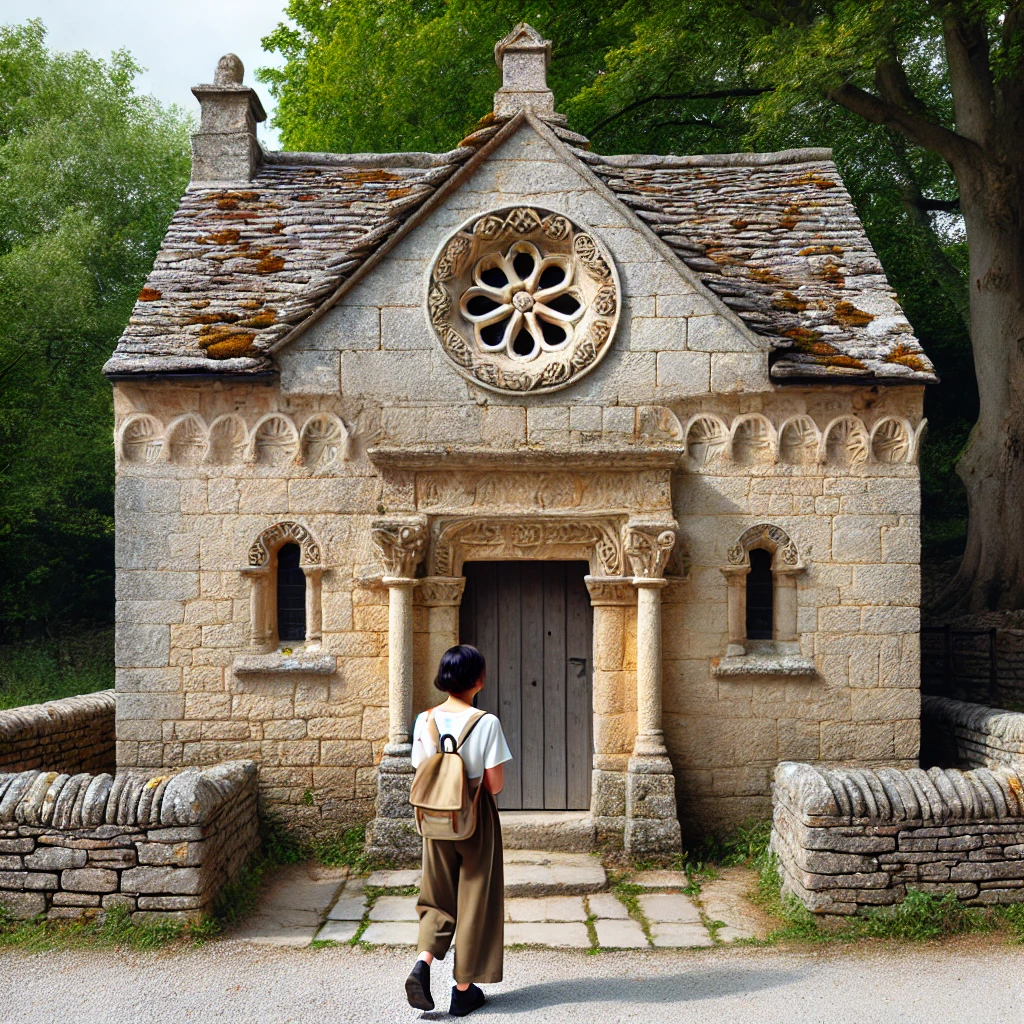ChatGPT:
The Oratory of San Pellegrino is a small, medieval church located in the town of Bominaco, in the Abruzzo region of Italy. It is renowned for its exquisite frescoes that date back to the 13th century, making it one of the finest examples of medieval art in Italy.
One of the oratory’s most remarkable features is the “liturgical calendar” fresco, which is a rare depiction of the annual cycle of Christian festivals. The artwork inside the Oratory of San Pellegrino is detailed and rich in symbolism, making it an important site for both art history and religious heritage. Despite its modest size, the oratory is a significant cultural and historical landmark in the region.
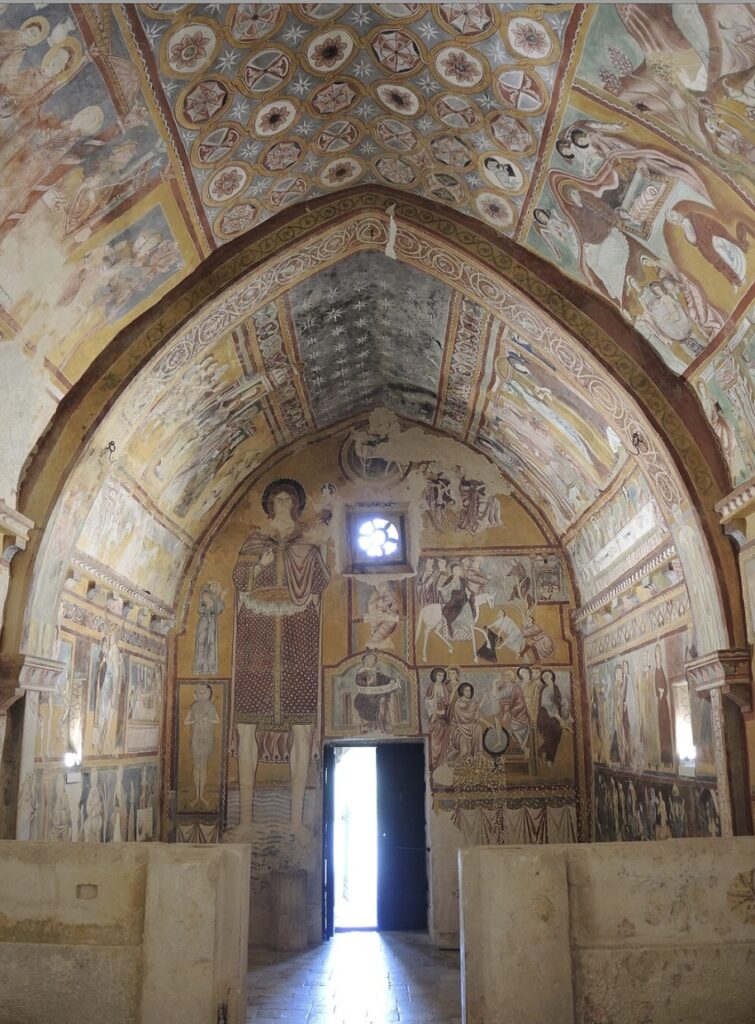
Origin and Purpose
The oratory was established as a place of worship and pilgrimage. It was likely intended as a chapel for the monks of the nearby Monastery of Santa Maria Assunta, part of the Benedictine community. At its peak, the monastic complex was one of the most important religious centers in Abruzzo. The relics of San Pellegrino and the sacred frescoes made it a spiritual focal point for pilgrims, which added to its significance.
Architectural Features
The Oratory of San Pellegrino is relatively small, with a simple rectangular structure. Its construction is Romanesque in style, typical of the era, with stone walls and a wooden roof. Externally, the oratory appears modest, with little ornamentation beyond a basic portal and small windows. However, the interior is where the true artistic significance lies.
Frescoes
The interior walls are almost entirely covered with frescoes, commissioned likely around the time of the oratory’s founding. These frescoes depict:
- Biblical scenes: Including the Life of Christ, the Passion, and the Last Judgment.
- Liturgical calendar: A rare and detailed portrayal of the Christian festivals and their associated saints’ days, which served as a visual guide to the religious year.
- Symbolic motifs: Animals, saints, and allegorical figures from Christian tradition.
The style of the frescoes is Gothic, reflecting the transition from Romanesque to Gothic art in the late medieval period. The colors remain remarkably vivid due to the dry climate and the protective structure of the oratory.
Historical Significance
The oratory’s significance grew with the monastic community during the Middle Ages. However, by the 16th century, the monastery began to decline, and much of its larger structures fell into disrepair. Despite this, the oratory remained preserved, in part because of its role as a local pilgrimage site. It survived through the centuries, protected by its remote location and relative isolation from larger conflicts.
In modern times, the oratory is recognized as an important cultural and religious heritage site, both for its architecture and, especially, its frescoes. These artworks offer a window into medieval Christian spirituality, art, and the monastic tradition in Abruzzo. Restoration efforts in the 20th century helped preserve the frescoes and the structure, ensuring its place as a historical and religious landmark in Italy.
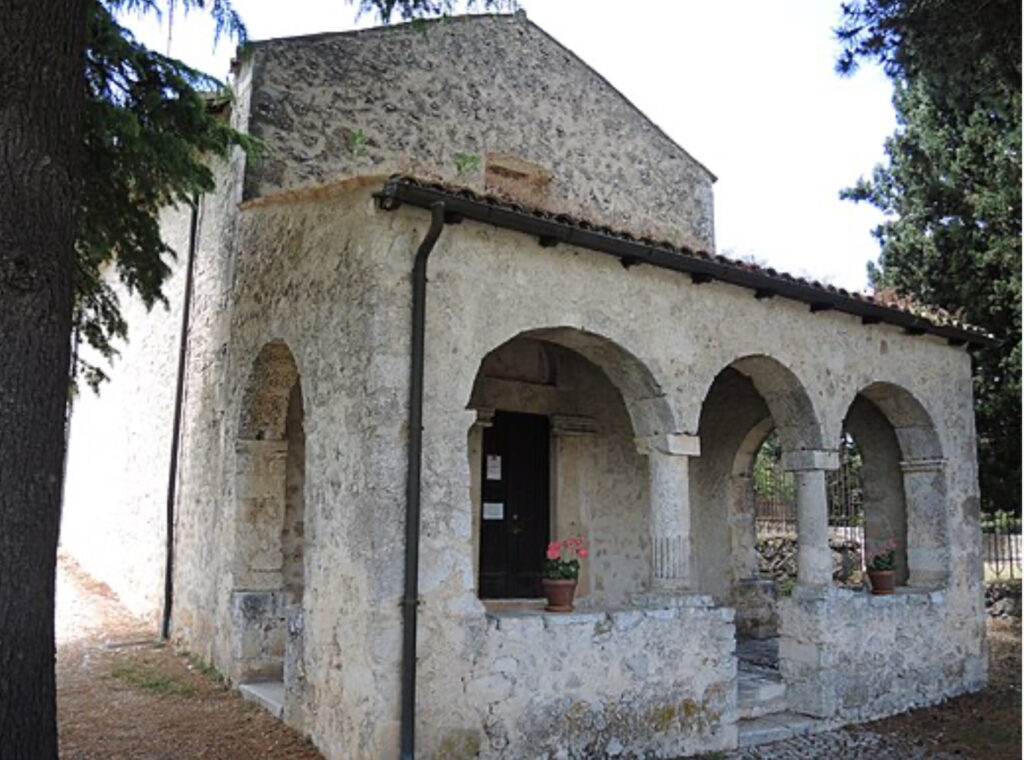
The frescoes inside the Oratory of San Pellegrino are considered some of the most significant examples of 13th-century medieval art in Italy. Their vivid colors, complex iconography, and detailed depictions of biblical scenes and religious symbolism make them a masterpiece of Gothic fresco. Here’s a breakdown of their significance:
1. Religious and Educational Role
In medieval times, frescoes in churches were often used as visual aids to educate the largely illiterate population about biblical stories, saints, and Christian doctrine. The frescoes in the Oratory of San Pellegrino serve this same purpose, depicting key moments from the Life of Christ, the Passion, and the Last Judgment in vivid, dramatic detail. These scenes were meant to inspire devotion, teach moral lessons, and reinforce the central tenets of Christianity.
- Life of Christ: These scenes, including the Annunciation, Nativity, and Crucifixion, would have taught the story of Christ’s life, death, and resurrection to worshipers, bringing the Gospel stories to life in a highly visual form.
- The Passion: The detailed portrayal of Christ’s suffering and death would have reminded the faithful of the sacrifice made for humanity’s salvation, encouraging penitence and reflection.
- The Last Judgment: This scene, depicting Christ as the judge of souls, serves as a stark reminder of the consequences of sin and the promise of salvation for the righteous.
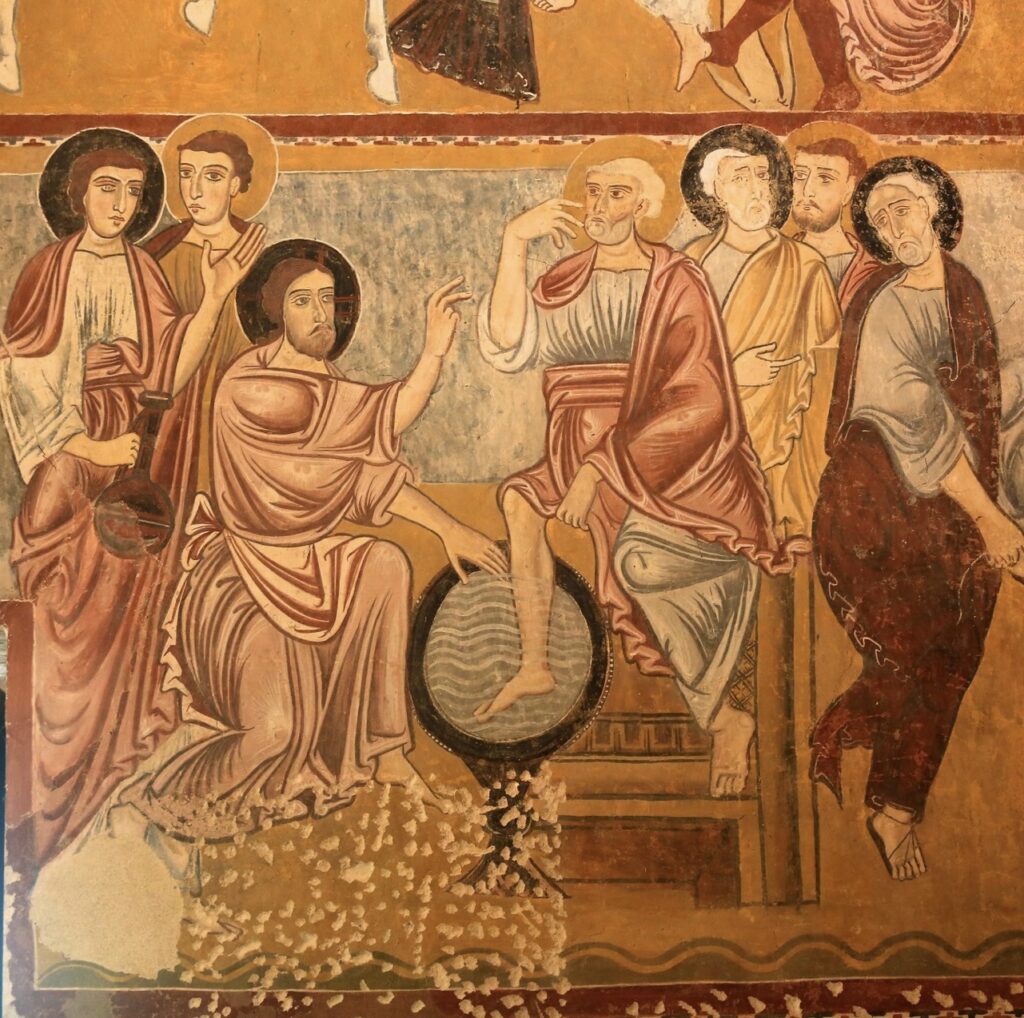
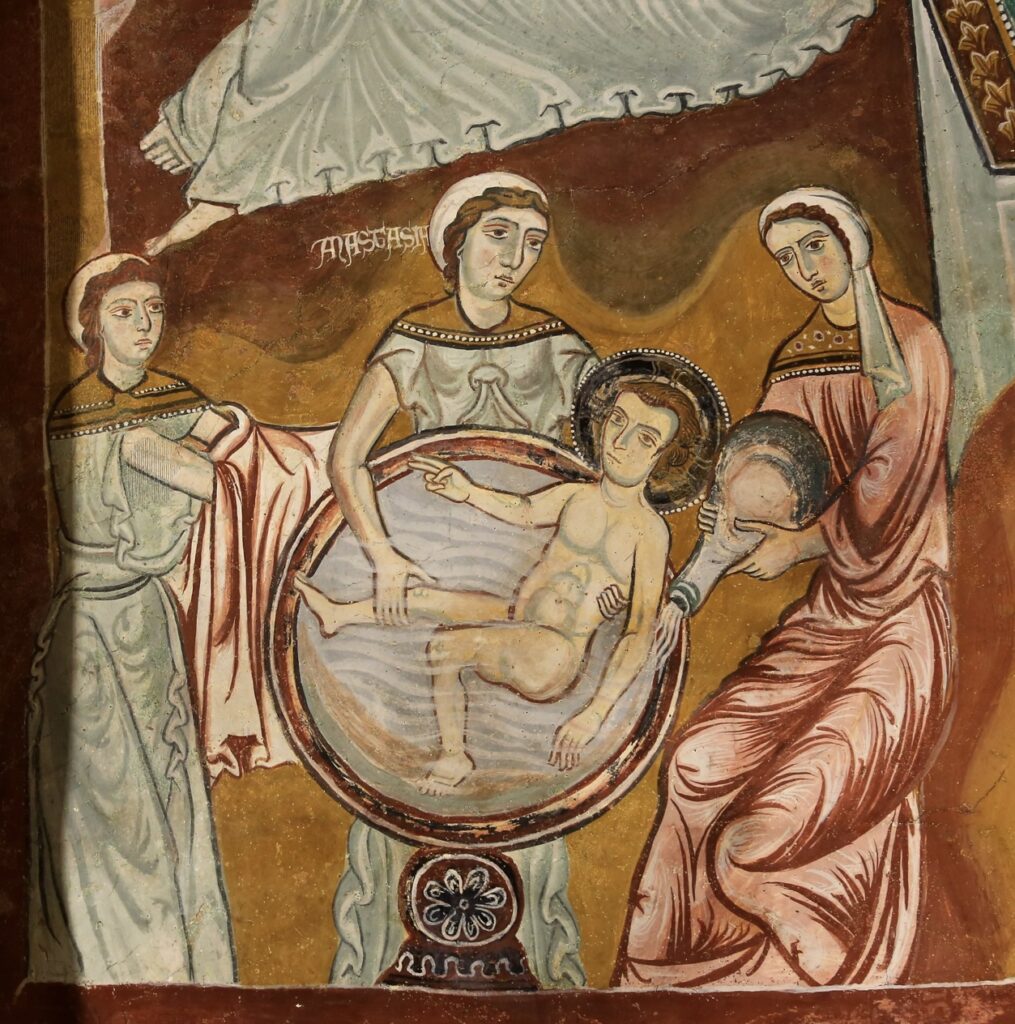
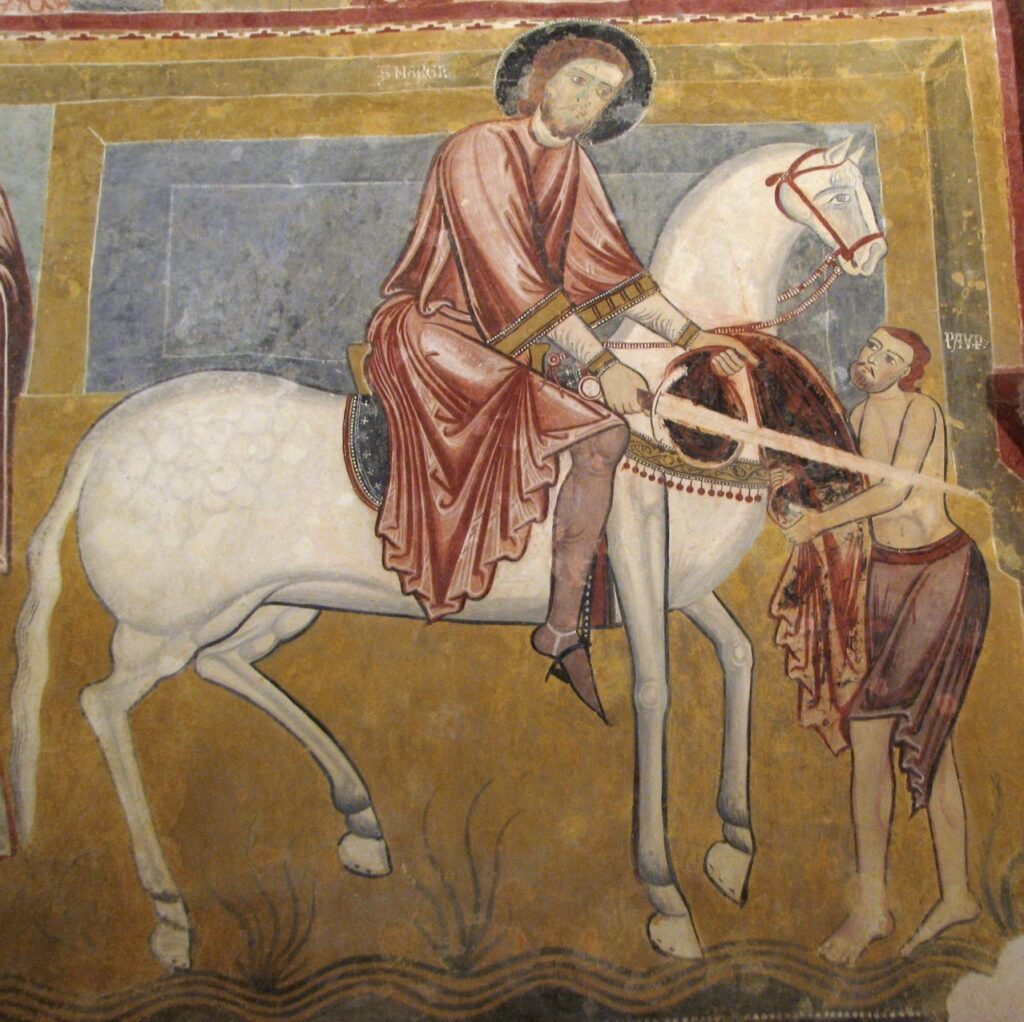
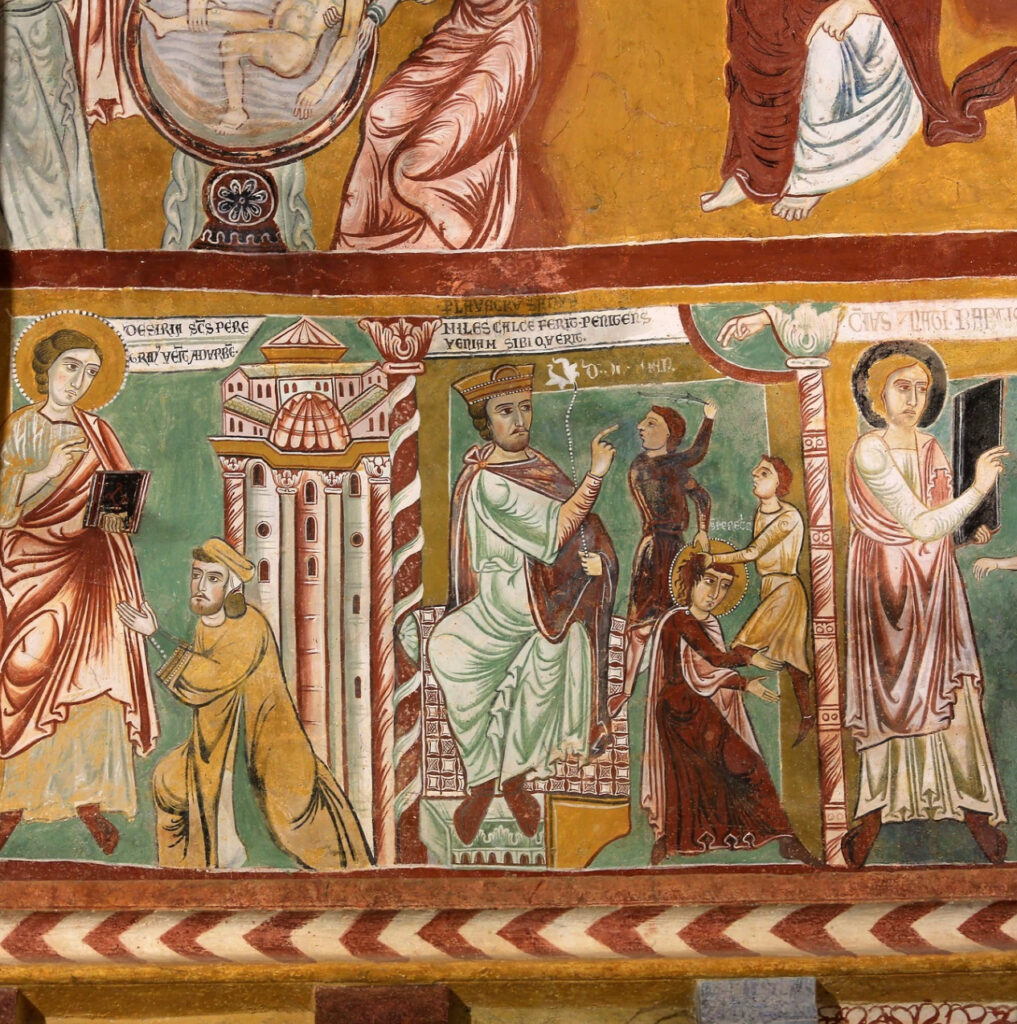
2. The Liturgical Calendar Fresco
One of the most unique aspects of the Oratory of San Pellegrino’s frescoes is the liturgical calendar. This rare feature illustrates the entire Christian year, highlighting important feast days, saints’ days, and religious festivals. Such calendars were essential for monastic communities, where the liturgical rhythm governed daily life, prayer, and religious observance. It would have helped monks and pilgrims alike keep track of religious events.
- Visual Calendar: Each month is represented with a scene that reflects seasonal agricultural activities or religious events, tying the natural world to the sacred. For example, months associated with harvests, plowing, or wine-making may be depicted alongside saints’ feast days.
- Ritual Significance: The calendar fresco illustrates the deep connection between time, agriculture, and religious practice in medieval life. This fusion of the sacred and the secular reflects the medieval worldview, where daily activities were intertwined with the liturgical calendar.
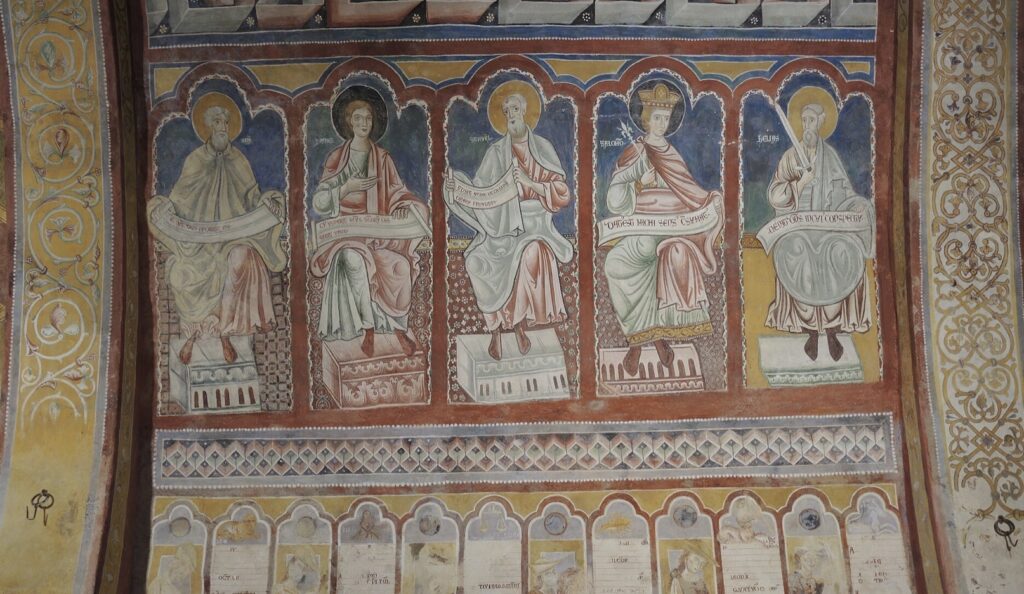
3. Artistic Mastery and Symbolism
The frescoes demonstrate a high level of artistic skill, especially in the use of vivid colors, detailed expressions, and symbolic elements. The style marks a transitional phase from Romanesque to Gothic art, reflecting the changing trends in European art during the 13th century.
- Color and Technique: The frescoes are noted for their brilliant colors, which have been remarkably well-preserved. The artists used a technique called fresco buono, where pigments are applied to wet plaster, allowing the colors to bond with the wall surface. This method gives the frescoes their lasting vibrancy.
- Symbolic Representation: The frescoes are filled with symbolic imagery. Angels, demons, animals, and saints are depicted with a clarity that reflects the medieval understanding of spiritual forces. For example, in the Last Judgment scene, the contrast between the blessed and the damned is stark, with heaven and hell clearly delineated.
- Heavenly Realm: Christ is often shown surrounded by angels and saints, representing the divine realm. These figures are depicted with serene expressions and vibrant, harmonious colors.
- Hell and the Damned: The damned, by contrast, are portrayed in darker tones, often with grotesque, distorted features, emphasizing the moral consequences of sin and the terror of eternal damnation.
4. Cultural and Monastic Context
The frescoes provide insight into the cultural and religious life of the Benedictine monastic community that once thrived in Bominaco. The oratory was likely used for private devotions by the monks, as well as by pilgrims who came to venerate the relics of San Pellegrino. The frescoes reflect the theological concerns of the time, such as the importance of penitence, the hope for salvation, and the role of saints as intercessors.
- Monastic Influence: The Benedictine order, known for their scholarly pursuits, would have played a role in the design and content of the frescoes, ensuring that they reflected orthodox Christian teaching and liturgical practice. The detailed depiction of saints and the liturgical calendar indicates a community deeply immersed in both spiritual and intellectual life.
- Pilgrimage: The presence of the frescoes, combined with the relics of San Pellegrino, would have made this oratory a significant pilgrimage site. Pilgrims traveling to Bominaco would have encountered these frescoes as part of their spiritual journey, deepening their religious experience.
5. Preservation and Legacy
The preservation of the frescoes over centuries is significant in itself. Despite the decline of the monastery and the surrounding buildings, the oratory and its interior artworks have remained intact. This has allowed the frescoes to become an important part of Italy’s cultural and artistic heritage.
- Restoration Efforts: Over the years, restoration work has been carried out to maintain the integrity of the frescoes. This work has ensured that the vividness of the colors and the detail of the scenes remain visible for future generations.
- Cultural Impact: Today, the Oratory of San Pellegrino is a key example of medieval Italian art, attracting visitors, scholars, and pilgrims alike. The frescoes are studied as an important link in the development of Gothic art and as a window into the spiritual and artistic life of 13th-century Italy.
Conclusion
The frescoes of the Oratory of San Pellegrino are a rare and invaluable example of medieval religious art. They serve as both educational tools and spiritual guides, reflecting the deep faith of the Benedictine community and the broader medieval world.
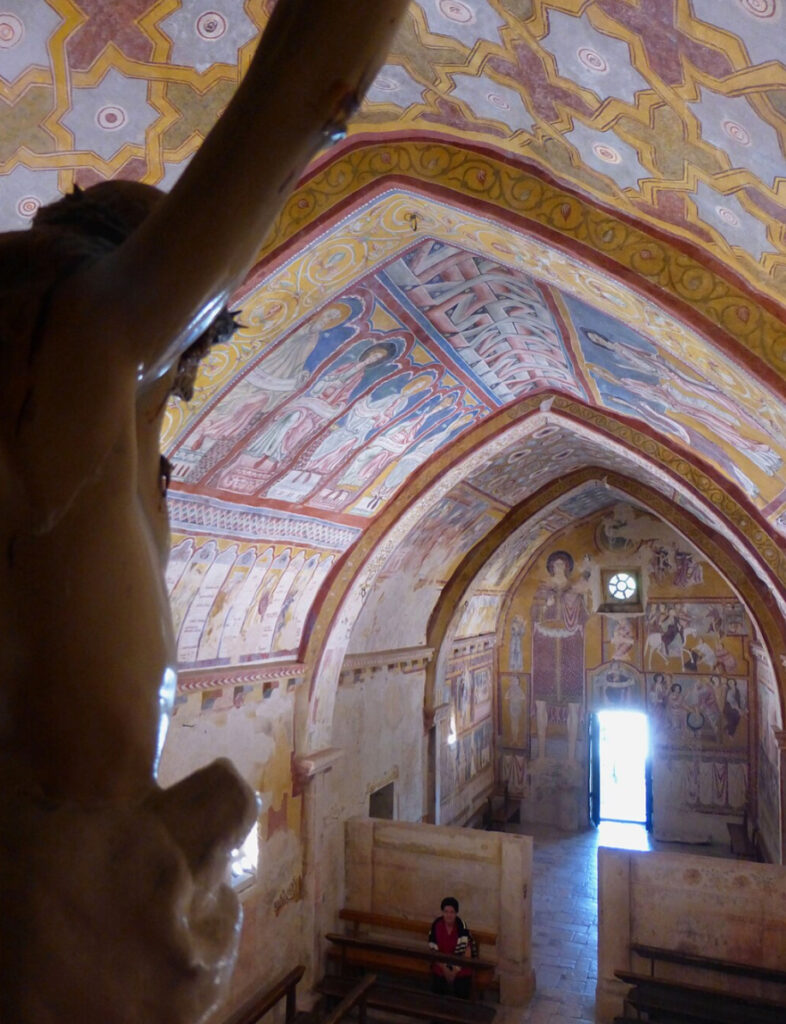
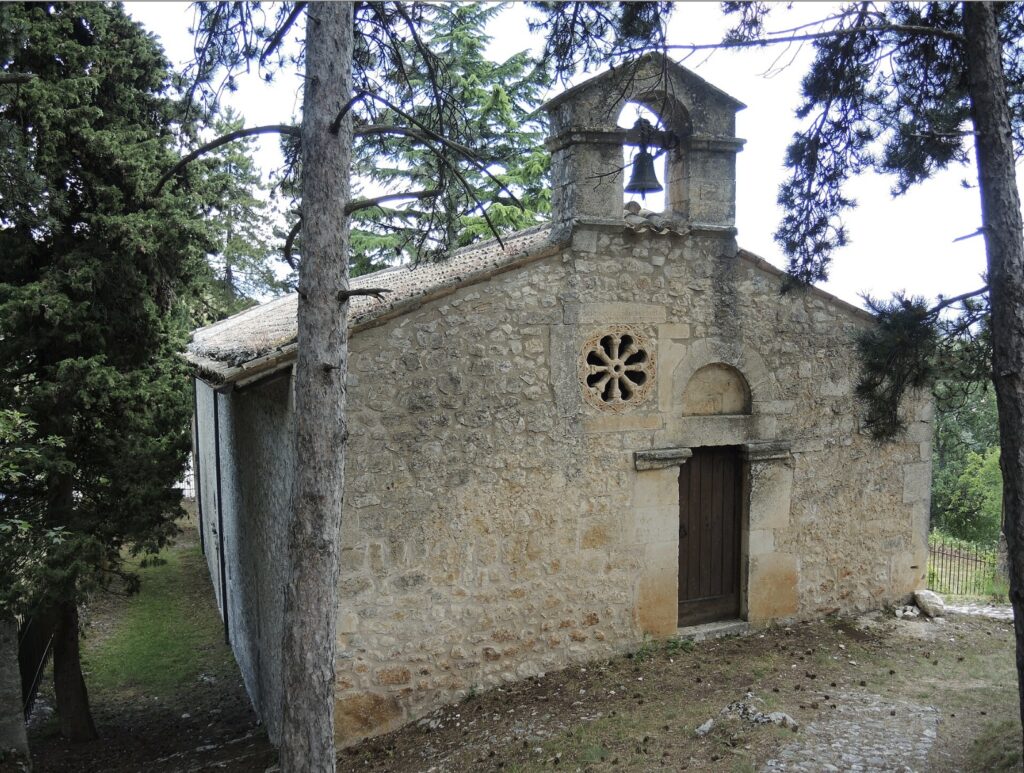
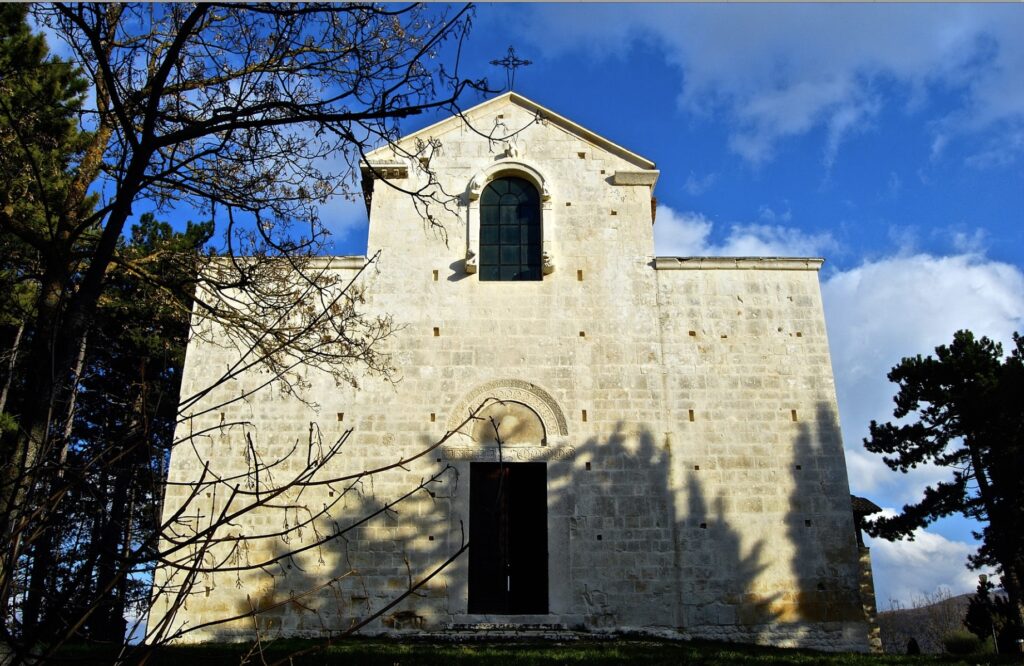
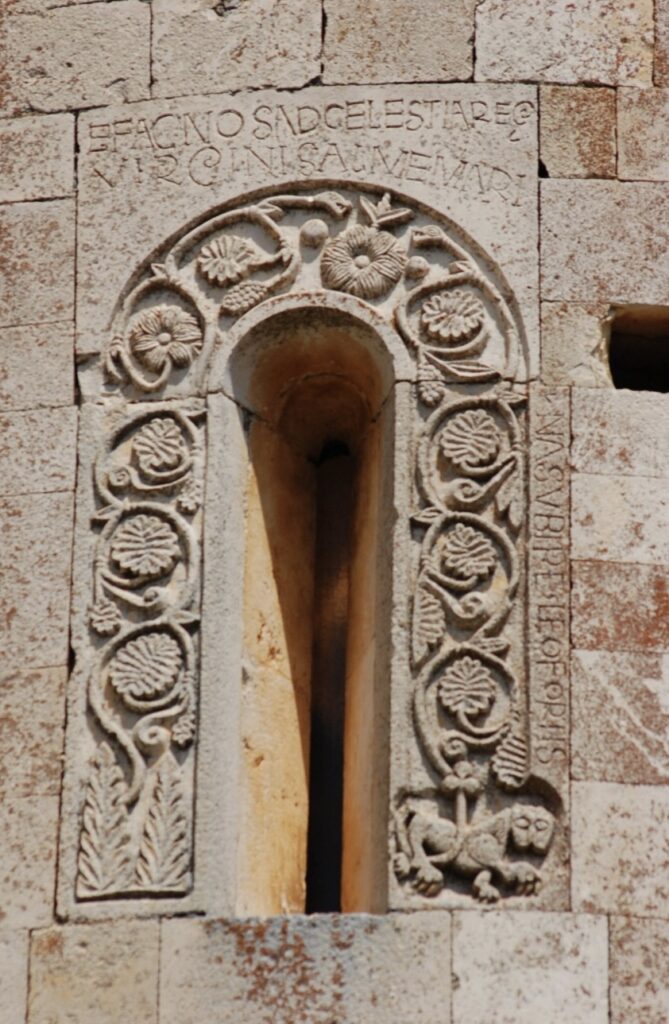
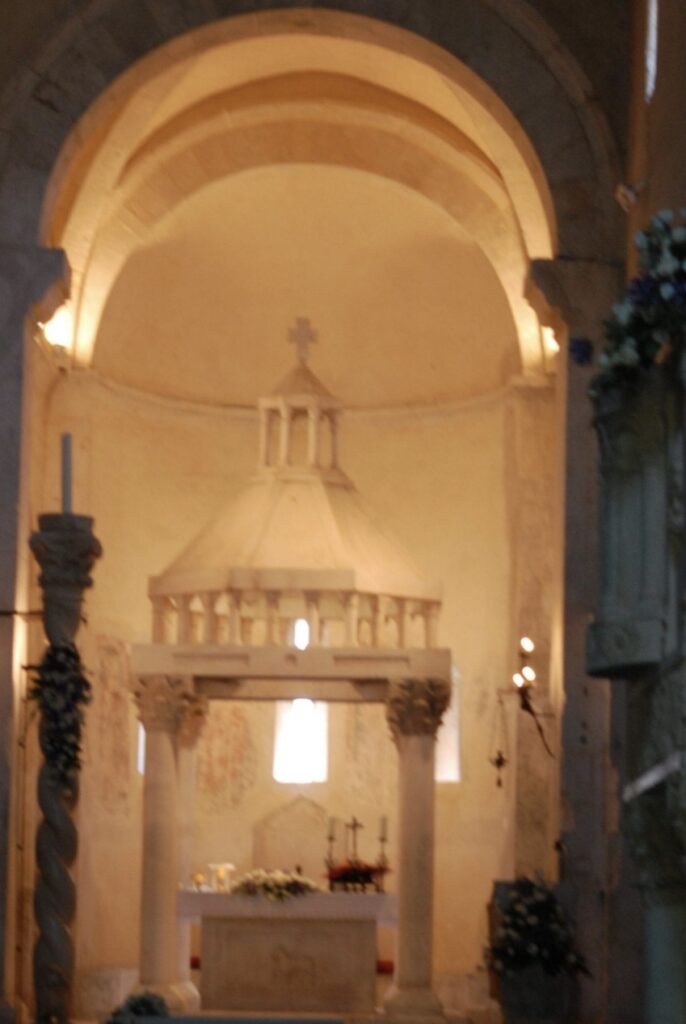
The frescoes of the Oratory of San Pellegrino have been remarkably well-preserved over the centuries. Here’s a detailed look at why these frescoes have survived in such good condition:
1. Fresco Buono Technique
The frescoes were created using the fresco buono (true fresco) technique, which is known for its durability. In this method, pigments are applied to wet lime plaster, allowing the colors to chemically bond with the wall surface as the plaster dries. This creates a long-lasting, stable artwork that is more resistant to peeling or flaking compared to other techniques, such as painting on dry plaster (fresco secco). As the plaster dries, the colors become part of the wall, offering a natural protection against damage.
2. Dry Climate of the Region
The oratory is located in the Abruzzo region of Italy, which experiences a relatively dry and stable climate. This lack of excessive humidity has been key to the preservation of the frescoes. High levels of moisture can cause mold growth, fading, or peeling in wall paintings, but the generally dry conditions in Bominaco have limited such deterioration.
3. Architectural Protection
The structure of the oratory itself has played a crucial role in protecting the frescoes. The building is small and has thick stone walls, which help maintain stable internal temperatures and shield the frescoes from drastic changes in climate. Additionally, the absence of large windows limits exposure to sunlight, which can cause colors to fade over time. This combination of limited light and temperature regulation has helped to preserve the vibrant colors and details of the frescoes.
4. Isolation and Minimal Use
The oratory’s relatively remote location in Bominaco, a small town off the beaten path, has shielded it from the kinds of damage that could occur in more heavily trafficked or urban settings. It was not subject to the same level of wear and tear, pollution, or human interference that might have occurred in more central or frequently visited churches. This isolation has helped preserve both the building and its frescoes from the ravages of time.
Additionally, the Oratory of San Pellegrino was used mainly by monastic communities and pilgrims, rather than large congregations. This limited use meant less environmental stress on the frescoes from smoke (from candles or incense), body heat, or moisture brought in by frequent visitors.
5. Restoration and Conservation Efforts
Throughout the 20th century, various restoration and conservation efforts have been undertaken to preserve the frescoes. These efforts include:
- Cleaning: Removing layers of grime, dust, and residues that accumulate on the surface of the frescoes.
- Stabilizing the Plaster: Ensuring that the underlying plaster remains intact, preventing cracking or flaking of the painted surface.
- Retouching: In some cases, faded areas have been lightly retouched by conservators to restore the original vibrancy, though this is done minimally to maintain the integrity of the original artwork.
- Humidity Control: Steps have been taken to control the humidity levels within the oratory, preventing excessive moisture from damaging the frescoes.
Modern conservation techniques also include non-invasive diagnostic tools like infrared scanning and spectroscopy, which help conservators understand the composition and condition of the frescoes without physically touching or altering them.
6. Cultural Awareness and Protection
Recognizing the artistic and historical importance of the Oratory of San Pellegrino, local authorities and heritage organizations have prioritized its preservation. The oratory is part of Italy’s rich cultural heritage, and as such, it has been the focus of ongoing protection and study. This awareness has ensured that any necessary interventions are carried out with care and that the site is monitored to prevent further degradation.
7. Earthquake Resistance
While Abruzzo is prone to earthquakes, the thick stone construction of the oratory and its relatively small size have helped it withstand seismic activity better than larger, more fragile structures. In addition, after significant earthquakes in the region, such as the 2009 L’Aquila earthquake, efforts were made to assess and repair any damage to the oratory, ensuring the frescoes remained intact.
Conclusion
The preservation of the frescoes in the Oratory of San Pellegrino is the result of a combination of factors: the durable fresco technique, the protective architecture, the region’s dry climate, and the site’s relative isolation. Modern conservation techniques and a strong commitment to cultural heritage have further ensured that these medieval artworks remain vibrant and intact for future generations to study and appreciate.
